
Kód: 04576873
Science Strategy for the Exploration of Europa
Autor Committee on Planetary and Lunar Exploration, Commission on Physical Sciences, Mathematics, and Applications, Space Studies Board, Division on Enginee
Since its discovery in 1610, Europa - one of Jupiter's four large moons - has been an object of interest to astronomers and planetary scientists. Much of this interest stems from observations made by NASA's Voyager and Galileo spa ... celý popis
- Jazyk:
 Angličtina
Angličtina - Vazba: Brožovaná
- Počet stran: 80
Nakladatelství: National Academies Press, 1999
- Více informací o knize

1555 Kč
Dostupnost:
50 % šance Máme informaci, že by titul mohl být dostupný. Na základě vaší objednávky se ho pokusíme do 6 týdnů zajistit.
Máme informaci, že by titul mohl být dostupný. Na základě vaší objednávky se ho pokusíme do 6 týdnů zajistit.Prohledáme celý svět
Mohlo by se vám také líbit
-

Barcelona pop-up
108 Kč
Darujte tuto knihu ještě dnes
- Objednejte knihu a zvolte Zaslat jako dárek.
- Obratem obdržíte darovací poukaz na knihu, který můžete ihned předat obdarovanému.
- Knihu zašleme na adresu obdarovaného, o nic se nestaráte.
Informovat o naskladnění knihy
Zadejte do formuláře e-mailovou adresu a jakmile knihu naskladníme, zašleme vám o tom zprávu. Pohlídáme vše za vás.
Více informací o knize Science Strategy for the Exploration of Europa
Nákupem získáte 156 bodů
 Anotace knihy
Anotace knihy
Since its discovery in 1610, Europa - one of Jupiter's four large moons - has been an object of interest to astronomers and planetary scientists. Much of this interest stems from observations made by NASA's Voyager and Galileo spacecraft and from Earth-based telescopes indicating that Europa's surface is quite young, with very little evidence of cratering, and made principally of water ice. More recently, theoretical models of the jovian system and Europa have suggested that tidal heating may have resulted in the existence of liquid water, and perhaps an ocean, beneath Europa's surface. NASA's ongoing Galileo mission has profoundly expanded our understanding of Europa and the dynamics of the jovian system, and may allow us to constrain theoretical models of Europa's subsurface structure. Meanwhile, since the time of the Voyagers, there has been a revolution in our understanding of the limits of life on Earth. Life has been detected thriving in environments previously thought to be untenable - around hydrothermal vent systems on the seafloor, deep underground in basaltic rocks, and within polar ice. Elsewhere in the solar system, including on Europa, environments thought to be compatible with life as we know it on Earth are now considered possible, or even probable. Spacecraft missions are being planned that may be capable of proving their existence. Against this background, the Space Studies Board charged its Committee on Planetary and Lunar Exploration (COMPLEX) to perform a comprehensive study to assess current knowledge about Europa, outline a strategy for future spacecraft missions to Europa, and identify opportunities for complementary Earth-based studies of Europa. (See the preface for a full statement of the charge.)
 Parametry knihy
Parametry knihy
Zařazení knihy Knihy v angličtině Earth sciences, geography, environment, planning Geography
1555 Kč
- Plný název: Science Strategy for the Exploration of Europa
- Autor: Committee on Planetary and Lunar Exploration, Commission on Physical Sciences, Mathematics, and Applications, Space Studies Board, Division on Enginee
- Jazyk:
 Angličtina
Angličtina - Vazba: Brožovaná
- Počet stran: 80
- EAN: 9780309064934
- ID: 04576873
- Nakladatelství: National Academies Press
- Rozměry: 280 × 216 mm
- Datum vydání: 22. December 1999
Oblíbené z jiného soudku
-

Oxford IB Diploma Programme: Geography Course Companion
1876 Kč -
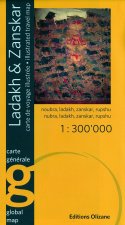
LADAKH ZANSKAR OLIZANE RV WP
800 Kč -

West Midlands A-Z Street Atlas (spiral)
632 Kč -

ALBANIA RKH RV R WP GPS
296 Kč -

Future of Packaging
690 Kč -

DANUBE BIKE TRAIL 1 DONAUESCHINGEN TO PA
386 Kč -

Level Geography Fieldwork & Skills
1657 Kč -

Geography: An Integrated Approach
2375 Kč -

Birds of New Guinea
1215 Kč -

IB Geography Study Guide: Oxford IB Diploma Programme
1255 Kč -

Birds of Hawaii and Micronesia
693 Kč -
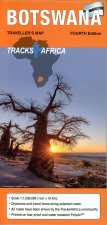
BOTSWANA TRACKS R V R WP
596 Kč -

Garibaldi
1742 Kč -

IB Geography Course Book: Oxford IB Diploma Programme
1211 Kč -

Cambridge International AS & A Level Geography Student's Book
1263 Kč -

Justinianic Mosaics of Hagia Sophia and Their Aftermath
2701 Kč -
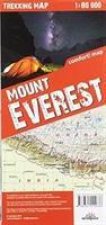
terraQuest Trekking Map Mount Everest
301 Kč -

Cambridge International AS and A Level Geography second edition
2356 Kč -

Do Earth
276 Kč -

Essential Maths Skills for AS/A-level Geography
409 Kč -

Dictionary of Physical Geography, 4e
1501 Kč -

Geography
1751 Kč -

Economic Geography - A Contemporary Introduction 3e
1226 Kč -

Butterflies of Europe
835 Kč -

Incredible History of India'a Geography
292 Kč -

History of the Adriatic: A Sea and Its Civilizatio n Cloth
677 Kč -

Cambridge International AS and A Level Geography Skills Workbook
591 Kč -

Urban Planning Imagination - A Critical International Introduction
620 Kč -

OCR A2 Geography Textbook
224 Kč -

Geology of Egypt
814 Kč -

Once Within Borders
755 Kč -
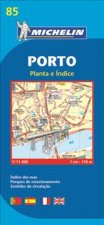
Porto - Michelin City Plan 85
210 Kč -

Geography for Cambridge International AS and A Level Revision Guide
850 Kč -

Biogeography and biomorphology
677 Kč -

IB Diploma
1035 Kč -

Road Map Normandy
345 Kč -

New Literary History of Modern China
1268 Kč -

Birds of Prey of the West
658 Kč -

Birds of Prey of the East
550 Kč -

Publics and the City
1338 Kč -

Saint Kitts / Nevis
484 Kč -

Havana / Cuba Central
291 Kč -
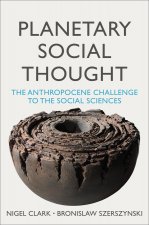
Planetary Social Thought
778 Kč -

Quantitative Geography
1285 Kč -

Edexcel GCE Geography Y2 A Level Student Book and eBook
1203 Kč -

comfort! map Sweden
370 Kč -

Walter Benjamin
888 Kč -

Historical Population Atlas of the Czech Lands
846 Kč -

Historical and Topographical Guide to the Geography of Strabo
7046 Kč
Osobní odběr Praha, Brno a 12903 dalších
Copyright ©2008-24 nejlevnejsi-knihy.cz Všechna práva vyhrazenaSoukromíCookies


 Vrácení do měsíce
Vrácení do měsíce 571 999 099 (8-15.30h)
571 999 099 (8-15.30h)